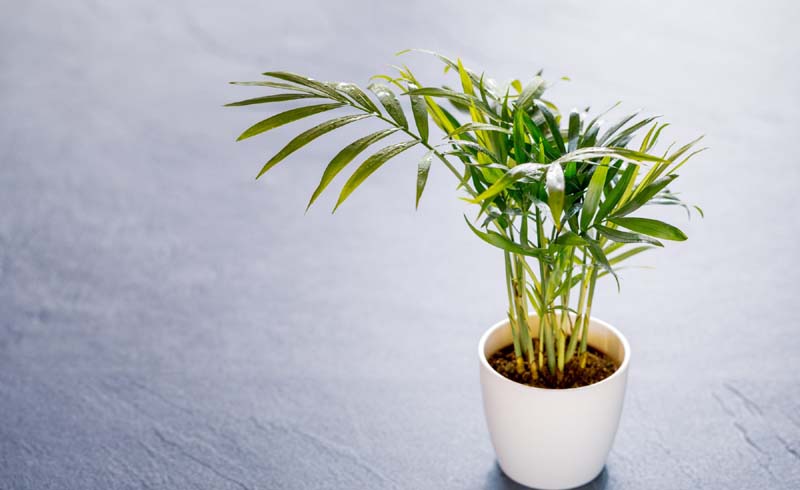Plus, the varieties you should keep in your home for the cleanest possible air.

By Lauren Wellbank, Martha Stewart
Multiple studies have shown that houseplants can reduce impurities in your house's air—but how do they do it?
If you're curious about how natural cleaning products work or why baking soda is such a powerful ingredient, you've come to the right place. We'll explain the science behind some of the most popular cleaning methods and tools, so you can you clean smarter—not harder. Follow along with Clean Science to see which technique we break down next.
We all want to breathe a little easier at home—especially now—and this begins with the cleanest possible air. Believe it or not, achieving great air quality in your home may be as simple as introducing a potted plant into the mix. Multiple studies have shown that houseplants can reduce impurities in your house's air—but how do they do it? And which ones are the best at keeping your air clean? Ahead, two experts explain exactly how this process works.
Plants remove VOCs.
The leafy green companions we keep in our houses not only brighten up our indoor spaces, but they also make the air we breathe a little cleaner in the process. The reason? According to Mike Rimland, the Vice President of Research and Development and Company Global Ambassador at Costa Farms, plants remove volatile organic compounds (VOCs), as cited in a study conducted by Dr. Wolverton at NASA. In this study, plant roots were shown to convert air laden with VOCs into food. "VOCs are something we don't tend to think much about, but the more energy-efficient our buildings become, the more they become trapped," he explains.
They absorb carbon dioxide and pollutants, too.
Oleta Collins, of Flourishing Art Design Studio, explains that all plants have purifying abilities through photosynthesis. "We breathe in oxygen and breathe out carbon dioxide," she says. "Plants do the opposite; they absorb carbon dioxide and create oxygen." According to Collins, plants clean the air by absorbing toxins, including VOCs—they also remove harmful pollutants and bio effluents, which are things that humans exhale (such as carbon dioxide and viruses), via tiny pores on their leaves.
Some plants purify the air better than others.
As for the hero houseplants with major purification capabilities? Peace lilies (Spathiphyllum), which are very common, filter VOCs that irritate our eyes, noses, and throats, which ultimate exacerbate colds, flus allergies, or asthma. Additionally, this easy-to-grow plant has been shown to help humidify dry air, which can also soothe dry skin. English ivy (Hedera) is another tried-and-true workhorse—it's been shown to remove particulate matter from the air—as are snake plants (Sansevieria), which are superior at cleaning the air and require little maintenance (they can take natural or artificial light, dry air, and even infrequent waterings). Last but not least? ZZ plants (Zamioculcas) are also easy to grow, so you can enjoy its many benefits practically anywhere.
These plants' benefits go beyond the physical.
Your favorite houseplant brings more to the table than cleaner air. "Being around plants, especially indoors, can help us feel less stressed and more relaxed," Rimland says. "Some science even points to plants helping lower our blood pressure levels."
See more at: Martha Stewart
![[feature] This Is How Houseplants Really Purify Your Air](https://blogger.googleusercontent.com/img/b/R29vZ2xl/AVvXsEjH56E10Tf7air7XQU3RyQ56pj_bvgXb_c8ZkGjvIS-ovz7iX5qkLttS4sNT2WwBPlx7S-EljMtKrTLfhdcA0xuyb7rQHtZJhnSQq3zaqU61aJvwbFxcsrnDe5L0BSI2KNbytbGPpltSGAh/s16000/women+3.jpg)























